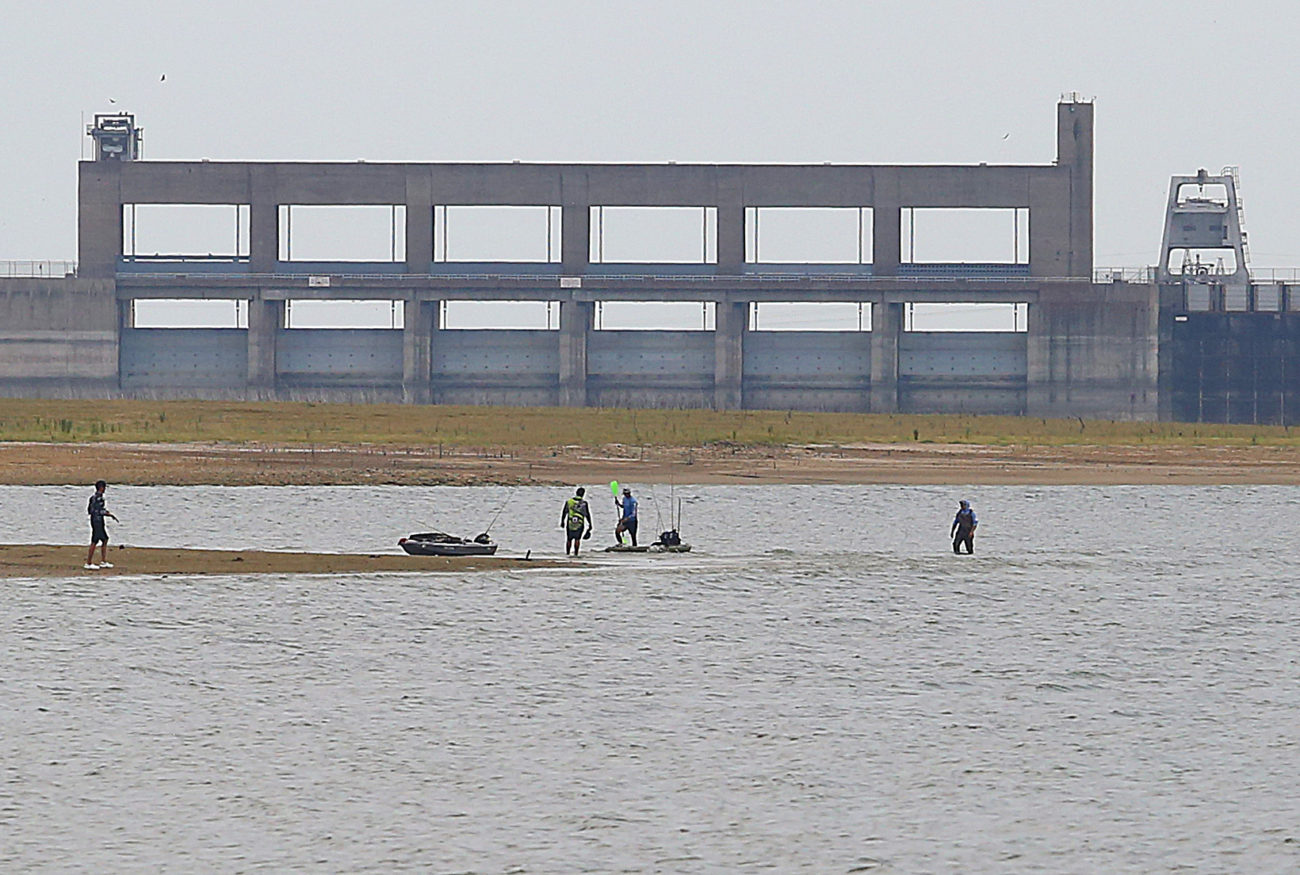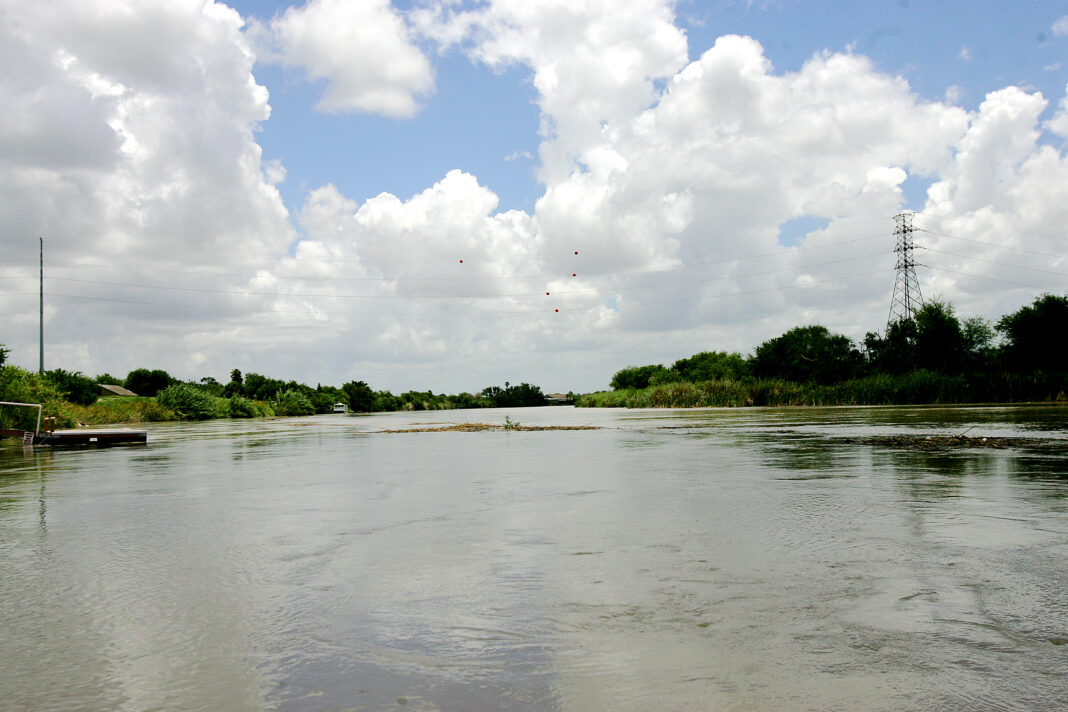“What do we do with no water coming down the Rio Grande? What if the waters run dry and Mexico cannot deliver as they committed to in this voluntary agreement between the United States and Mexico that dates back half a century?”
Those were the questions asked by Bobby Janecka, border commissioner for the Texas Commission on Environmental Quality during a virtual stakeholder meeting between the TCEQ and the International Boundary and Water Commission on Friday.
Janecka’s questions outlined the crux of the problem facing the Rio Grande Valley in the coming years as the effects of climate change and explosive population growth on both sides of the border threaten to dry up the river that gives our communities life.
And they were the questions the two agencies were seeking input on from local water experts as the U.S. and Mexico are now well into the second year of a water sharing agreement governed by a binational treaty.
The 1944 treaty spells out how much water each nation is entitled to from several watersheds that span the international border and which feed major waterways, including the Tijuana, Colorado and Rio Grande rivers.
It was the Rio Grande, in particular, that concerned Janecka and other officials Friday.
TREATY OBLIGATIONS
Under the terms of the 1944 binational water treaty, Mexico is obligated to deliver to the U.S. one-third of the water flows from the Rio Grande’s Mexican tributaries, where much of the river’s watershed lies.
Mexico must deliver 1.75 million acre-feet of water every five years, or about 350,000 acre-feet per year. But over the last two cycles — 2010 to 2015, and 2015 to 2020 — Mexico has come dangerously close to not meeting its treaty obligations.
Mexico actually defaulted on its water deliveries in the 2010-15 cycle, forcing it to pump more water into the Amistad and Falcon reservoirs at the beginning of the 2015-20 cycle in order to make up the deficit.
That delinquency came on the heels of a severe drought in 2011, but Mexico came close to defaulting again in 2020 as the treaty’s October deadline loomed.
By September of that year, Mexico was still short by nearly a year’s worth of water — some 307,000 acre-feet.
Jayne Harkins, then commissioner of the IBWC, sent urgent entreaties to her Mexican counterpart at La Comisión Internacional de Límites y Agua (CILA) for Mexico to fulfill its obligations. So, too, did Gov. Greg Abbott, who urged then-Secretary of State Mike Pompeo to apply pressure on Mexico.
Infighting among Mexican politicians — from the president to the governor of Chihuahua — as well as an uprising of Chihuahuan farmers who took over La Boquilla Dam, which would have supplied the water delivery, also complicated matters.
At the time, the farmers were struggling to produce crops in the wake of a prolonged drought that had plagued the mountains there.
In the end, Mexico made good on its treaty obligations by a trick of the ledger.
Only a scant amount of water flowed from Mexican rivers to the U.S. between December 2019 — when officials here first began to issue warnings — and the Oct. 25, 2020 deadline.
Instead, Mexico righted the accounting by transferring ownership of water already stored in the Falcon and Amistad reservoirs to the United States.
The water levels at both reservoirs remained the same, but now the U.S. had ownership of — and the right to draw upon — a larger percentage of that stored water than before.

WATER WORRIES
The treaty allows for such a maneuver to be used to satisfy the water debt, but it does nothing to change the amount of water physically available on the Rio Grande.
And now four months into year two of the current water cycle, U.S. officials are again worried that water will run short.
“Our state, and Mexico as well, is in the midst of an unseasonably long and unseasonably severe drought that’s lasted years and years in terms of regional weather patterns,” Janecka said Friday.
“And that’s a nightmarish challenge for y’all, especially when we’re seeing such dynamic growth,” he said to the 50-odd people who attended Friday’s virtual meeting.
The demand for water is only going to continue to rise, putting more stress on a river whose waters already — at times — don’t make it to the Gulf of Mexico.
For Maria Elena Giner, an El Paso native whom President Joe Biden appointed the new commissioner of IBWC last August, finding solutions to the pending water crisis are of utmost importance.
“I serve some of the most disadvantaged communities and I am going to make sure that I am going to bring the full force of the federal government to ensure that we get our fair share,” Giner said.
OTHER EXAMPLES
Already, the IBWC has been looking to see how other water authorities have approached shortages — in particular, the seven Southwestern states which rely on the Colorado River.
Those states — Wyoming, Colorado, Utah, New Mexico, Nevada, Arizona and California — are no stranger to severe drought. Nor are they unfamiliar with binational water debts.
As part of the same 1944 treaty, the United States must pay Mexico some 1.5 million acre-feet of water from the Colorado River each year.
The bulk of that river’s water is stored in what Jennifer Peña referred to as “two big daddy reservoirs” — Lake Mead and Lake Powell, located in Nevada and Arizona, respectively. The reservoirs are the largest in the U.S. by volume.
Peña, who serves as the IBWC’s chief legal counsel, spent 15 years working on the Colorado River system. She saw firsthand how severe drought fueled by climate change has caused the Colorado River to go from regularly overflowing the Hoover Dam in the 1980s, to the present day, where both reservoirs are seeing historically low water levels.
“Our own projection’s showing the lakes could literally run out of water,” Peña said.
Colorado River officials came up with a water “banking” system that incentivized large-scale water users, such as farmers, to “create” water through conservation or other measures, such as piping in water from other resources, Peña explained.
The program allowed both U.S. and Mexican water customers to bank water in the American reservoirs for later use, even as drought conditions worsened and lake levels continued to fall.
RIO GRANDE’S FUTURE
It was those falling water levels that proved conservation alone wasn’t enough to stay ahead of the problem, prompting the seven Colorado River states to commit to spending $100 million just to maintain today’s current low lake levels through 2026, Peña said.
And the outlook for the Rio Grande is similar. Long term drought continues to persist throughout border Texas, but also in the Chihuahuan mountains that supply the Rio Grande.
While Friday’s virtual meeting served as the first of its kind between the IBWC and TCEQ, it’s also only the beginning of what will be many interagency — and international — discussions to come.
“The climate change studies for the Rio Grande are not great. There will be a warming climate, higher (evaporation) or transpiration, and less precipitation,” Peña said.
“So, while it’s dire — dire — in the Colorado River, we are not gonna escape on the Rio Grande from these lower inflows. And you’re seeing it. The drought is here, (and) we don’t know how long it will last.”




